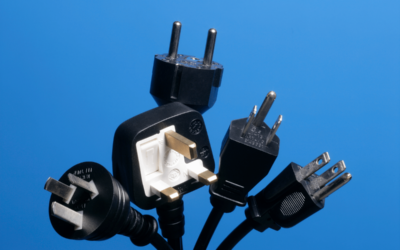We regularly get questions from those interested in Kill Bill’s ability to handle the usage-based model for billing. Usually these queries are from folks who work in telecommunications and are looking for a billing solution. (And yes, Kill Bill is used by several telco operators.)
However, usage billing isn’t the sole provenance of telcos. It’s catching on across all sorts of industries, services, and products.
This post covers the basics of usage billing as well as some of the complexities that you can add on to evolve your pricing models to capture as much revenue as possible.
The TL;DR definition of the billing usage-based model is that it bills the user for what they have used over a given period of time. For example, at the end of the month, the electric company bills a customer for the amount of energy they have consumed.
Basic Concept for Measuring and Billing for Usage
To run usage billing in a business, you need a way to measure the customer’s consumption, then convert that information into a bill or invoice.
- Measure the consumption
- Transform the consumption data
- Invoice based on consumption data
1. Measure the consumption
Measuring collects the raw data of what actually happened. The measurement method varies widely depending on your industry’s product. Some examples:
- Telecom (depending on the plan): minutes or data usage
- Utilities: water/electricity/gas the customer uses
- Streaming media: number of videos watched
- Boating club: number of boat rides taken
2. Transform the usage data
This step, which is also referred to as mediation, takes the raw data from the metering system and transforms it into a form appropriate for the billing system. Mediation may involve data transformation, filtering, aggregation, validation, reconciliation, and smoothing.
3. Invoice/bill the user
This step sounds relatively simple. You bill the user based on the price assigned to how much they consumed across a specific period of time, right?
- Price
- Consumption
- Period of time
The consumption was measured in step 1. The price and period of time are defined in the billing system’s catalog.
Because this step is relatively simple, businesses—and this guy—initially believe that developing a billing system from scratch is no big deal. And at this point, it’s not a big deal.
However, there are many different ways to bill for usage, and each of those ways may have variations. Let’s look at some of these variations.
Variations on the Usage-Based Model of Billing
It’s not possible to capture all of the usage billing variations in one blog post. What we’ve done instead is to mention the ones that we’ve seen most frequently in our 20+ combined years developing billing software.
In Arrears Billing Versus In Advance Billing
Typically, usage is billed in arrears (after the billing period ends). It makes sense. After all, how can you charge a customer before they’ve actually used your product?
Actually, you could “charge” a customer beforehand with prepaid credits. As the user consumes the product, the credits are decremented. But when you do this, you also have to consider scenarios like:
- What happens at the end of the billing cycle if the customer has unused credits? Do they lose the credits or get to roll them over?
- What happens if the customer runs out of credits before the billing cycle ends? Do you stop allowing access to the product, or do you have an auto-purchase of more credits?
Although in advance usage billing isn’t that common, it could be quite lucrative for the right business, so that’s why we’re mentioning it!
Pricing Tiers and Usage Billing
When using the usage-based model to bill in arrears for what the customer consumed, you can charge based on the price per unit: [cell phone minutes used] * [per minute rate] = [bill amount]
However, you can also define pricing tiers. A pricing tier defines a price that’s associated with a minimum and maximum amount of usage:
| Tier Level | Min/Max Units Consumed | Price Per Unit | Examples |
| Tier 1 | 0 – 25 | $15 | 3 units * 15 = $45 |
| Tier 2 | 26 – 75 | $25 | 30 units * $25 = $750 |
| Tier 3 | 76 – 100 | $40 | 78 units * $40 = $3,120 |
As the customer uses the product, she may go through the max level of a tier and into the next tier. Depending on your business, you may choose to charge customers for each tier as their consumption increases (Ex: Tier 1 + Tier 2). In Kill Bill, this is the ALL_TIER policy.
Or, you may instead charge the customer the price of the highest tier reached (Ex: Tier 2). In Kill Bill, this is the TOP_TIER policy.
Variations on Pricing Tiers
When working with pricing tiers, a couple of variations include:
- Flat fee pricing—Instead of charging a per unit rate, you could charge a flat fee for each tier. So, using the same prices in the table above for Tier 2, if a user consumed 30 units, she would simply be charged $25.
- Volume pricing—In this scenario, you charge customers a lower amount the more they use. For example, in the table above, Tier 1 is $40, Tier 2 is $25, and Tier 3 is $15.
Pricing tiers are a great way to give customers a certain amount of usage “for free,” say from 1 to 10 units (Tier 1). If the customer goes over 10 units, then they are charged based on the price of the next tier (Tier 2). (Or just charged a flat overage charge fee.)
Rate Billing with the Usage-Based Model
This pricing model is also referred to as capacity billing. The billing amount is based on the maximum amount (high water mark) consumed across all the days of a billing period. Disk usage is a good example:
| Tier Level | Disk Space Used | Price Per Gigabyte |
| Tier 1 | 0 – 500 GB | $0.01 |
| Tier 2 | 501 – 1000 GB | $0.02 |
| Tier 3 | 1001 – 2000 GB | $0.03 |
Example: On Day 10 of your billing cycle, you used 805 gigabytes (GB) of data, the highest amount for the month. That’s Tier 2 pricing, so you multiply 805 by $0.02 to get a billing amount of $16.10.
Hybrid Usage-Based Models of Billing
Hybrid models combine the usage-based model of billing with a recurring subscription. This can offer the provider the best of both worlds, a recurring revenue stream and the appeal to the customer of being charged only for what they use.
In a hybrid model, the recurring-billing period may be different from the usage-billing period. It is good practice to keep the usage billing period short to reduce the possibility for major billing shocks.
On the other hand, it’s desirable to have the recurring period be as long as possible to limit the customer opportunity for churn. So, an annual recurring-billing period with a monthly usage-billing period is not uncommon.
In a hybrid model, there is often an allocation or endowment of units that is free of charge with the recurring charge and then a usage-based overage charge (that can be price per unit or volume pricing) that is added to the bill if the endowment is exceeded. The most familiar example is cell phone minutes where you will pay for a 500-minute plan at $40 per month and then it’s $0.05 for each additional minute.
Warning: Complicated Pricing Strategies Can Kill Sales
Keep in mind that it’s not in your best interest to devise the most complicated usage billing model possible. Whatever gains you might experience in doing this to achieve the maximum amount of profit would surely be canceled out by having to repeatedly explain your pricing to your customers—or never experienced at all because prospects will flee to a provider with a much simpler pricing structure!
If you have a question about the usage-based model or a pricing strategy with variations that don’t seem to fall into what we’ve discussed here and you’d like to see if Kill Bill can handle it, feel free to ask us or ask the Kill Bill Community.
To read more about pricing, check out 8 Ways to Charge Subscribers and 6 Tips for Choosing the Right Pricing Model.


